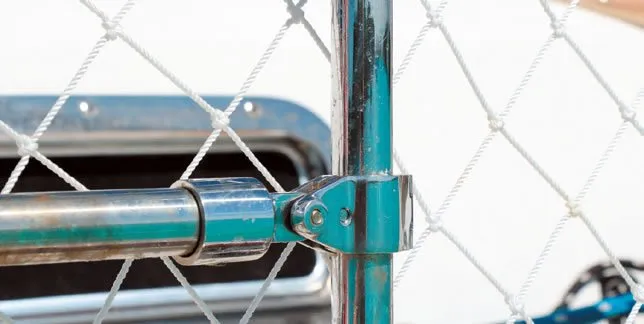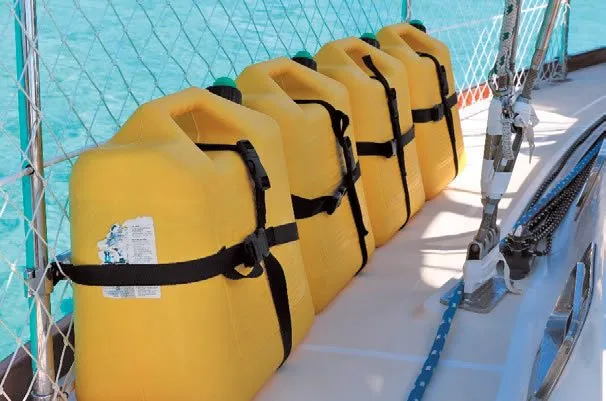Jerry cans are a fact of life when cruising on small to mid-size cruisers. When fitting out our 37-foot cruiser for an extended trip from Lake Ontario to the Bahamas we supplemented our diesel tankage with four jerry cans for diesel and three gas cans to power the dinghy and run the water maker/generator.
Although U-bolting wood between stanchions for the purpose of securing jerry cans is a time proven method, in many cases its kind of ugly, in my opinion.

In lieu of U-bolting boards to the life line stanchions to lash the jerry cans to, we built stainless steel securements using standard Bimini hardware. Hinged jaw clamps and tubing eye ends were used to attach horizontal stainless steel tubing between two stanchions, port and starboard. The hardware is available online for $12 to $15 dollars each or through a local canvas maker. Once the correct height above deck for the new horizontal tubes was established, I constructed and attached individual jerry can harnesses using 1-inch webbing and buckles. I learned the hard way that its a good idea to make the can harnesss captive on the tubing to prevent loss overboard when utilizing the cans. Crisscrossing the horizontal can straps on the horizontal tubes prevents the cans from sliding fore or aft
The horizontal tubing also comes in handy as fender attachment points that keep the fender lines from rubbing on the teak toe rails. I’m going to experiment with a similar arrangement with two horizontal tubes aft by the cockpit combings for aft deck life raft lashing.
Six months into the cruise the jerry can mounts have proven to be functional and relatively unobtrusive. Most importantly we’ve tested them to good account on several boisterous crossings complete with a few green water wash-downs.






































